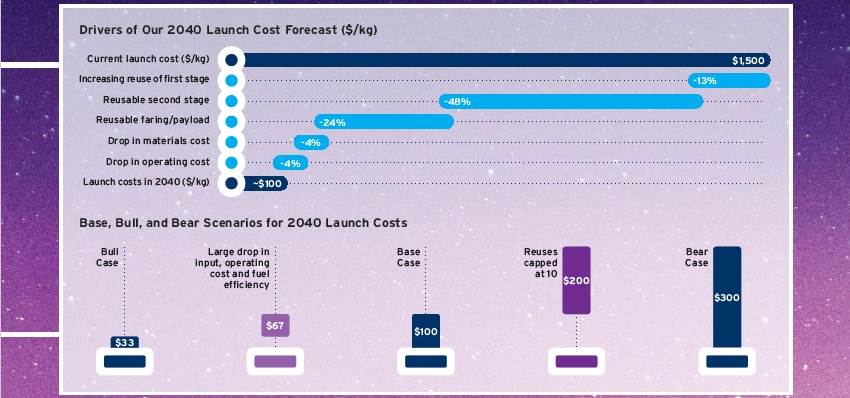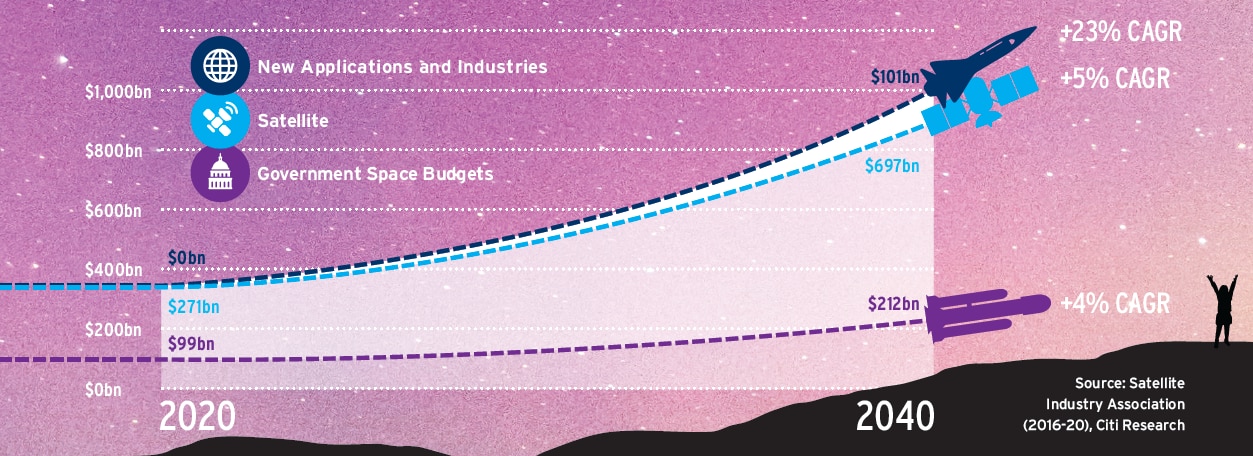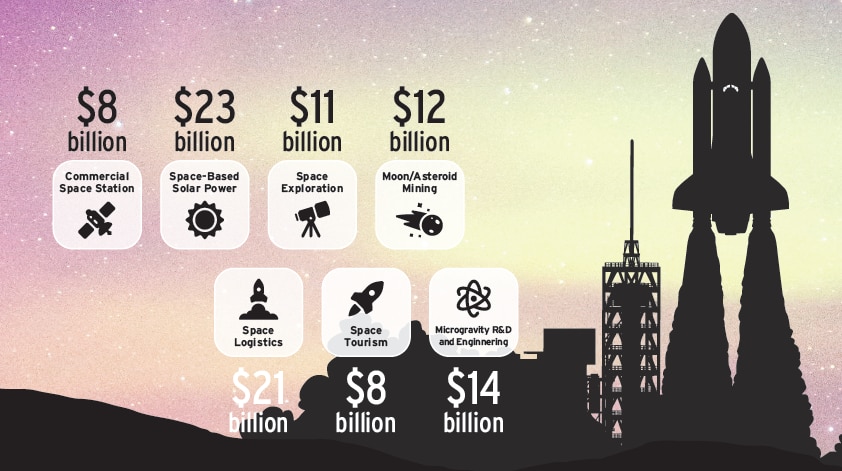
So what suddenly changed to make space more accessible? Two things: the private sector entered the industry and launch costs declined. Until recently, the space industry had been dominated by government-sponsored programs, which focused more on military capability, and creating revenue and jobs. As more private companies enter the industry, they are prioritizing operational efficiency.
Today’s launch costs of $1,500 per kilogram ($1,500/kg) are about 30x less than the launch cost of NASA’s Space Shuttle in 1981. Reusable rockets and launch vehicles, new materials and fuels, more cost-efficient production methods, and advancements in robotics and electronics systems are combining to drive these costs even lower. The authors of this report believe launch costs could to fall to $100/kg by 2040, and in a bullish scenario, to as low as $33/kg.
With lower launch costs, the authors expect the space economy to generate over $1 trillion in annual sales by 2040, up from around $370 billion in 2020. The satellite market, which currently makes up over 70% of the current space industry, will continue to dominate but is expected to undergo a paradigm shift in demand. Traditional applications such as video broadcasting will cede to newer applications such as consumer broadband and space-as-a-service. Satellite imagery and better analysis tools for large amounts of data could be crucial in helping nations and companies address many of the UN Sustainable Development Goals, particularly monitoring greenhouse gas emissions, deforestation and biodiversity.
But the fastest growth is expected to come from new space applications and industries, such as space-based solar power, space logistics, and Moon/asteroid mining, among others. These areas could generate ~$100 billion in annual sales by 2040.
Authors: Pavan Daswani,Charles J Armitage,Anita McBain,Samuel Burgess,Amit B Harchandani,Tahmid Islam,Anthony Nemoto,Nithin Pejaver, CFA,Jenny Ping,Ephrem Ravi,Michael Rollins, CFA,Sathish B Sivakumar,
Launch Costs are a Key Enabler

Space Industry Could be $1 Trillion by 2040

A Paradigm Shift in the Satellite Market

Growth in New Industries



